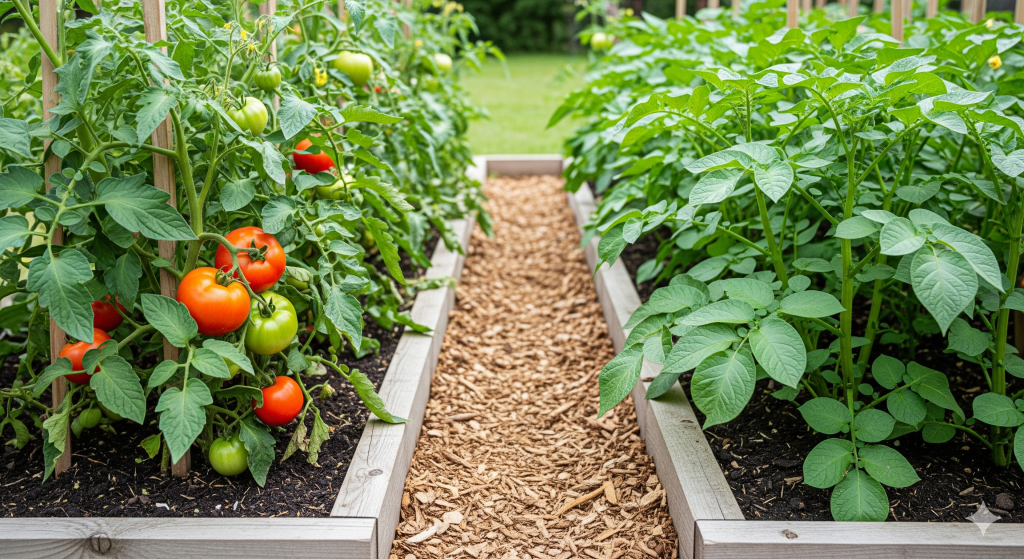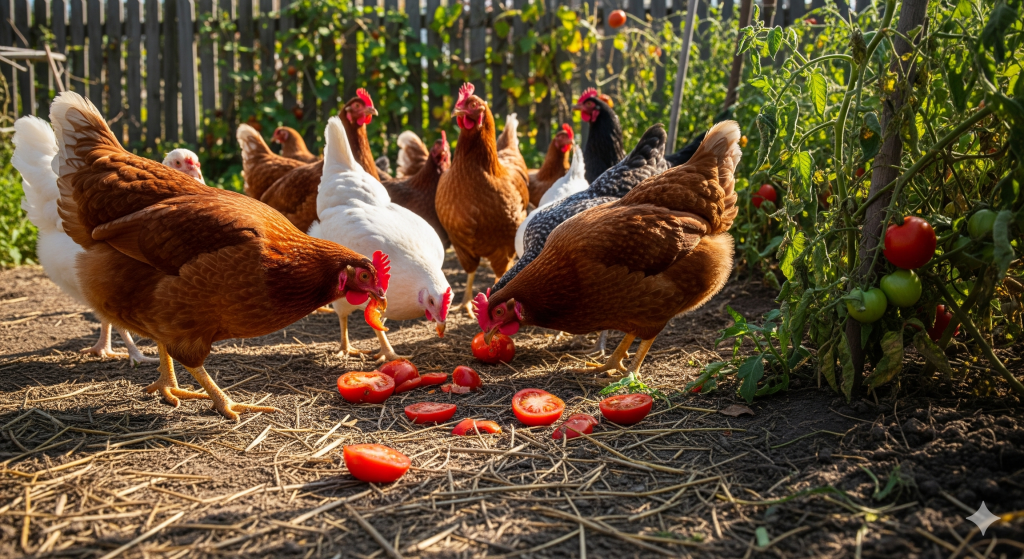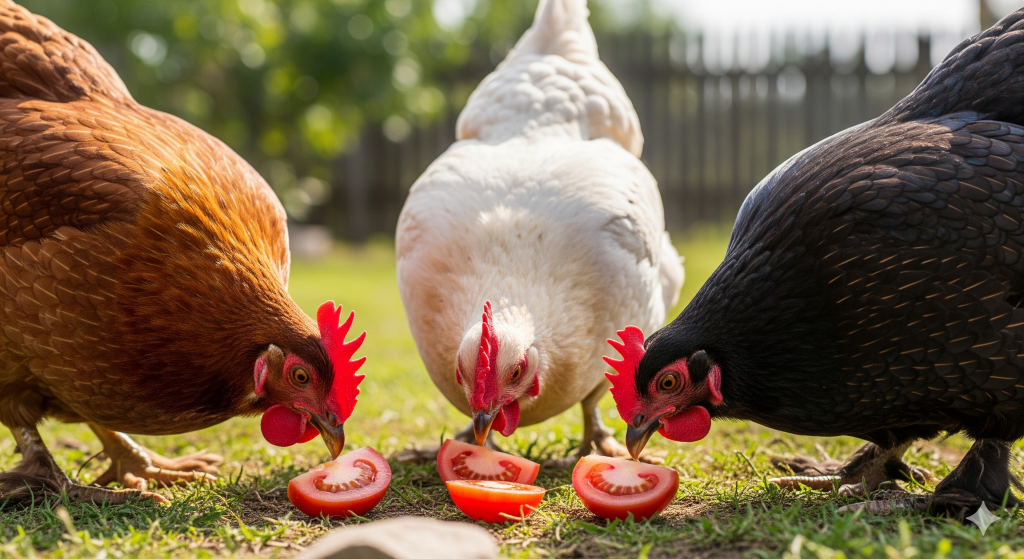Table of Contents
Companion planting is a cornerstone of a healthy and productive garden. By strategically placing certain plants next to each other, gardeners can deter pests, improve soil health, and even enhance the flavor of their crops. However, not all plants make good neighbors. When it comes to two of the most popular garden staples, tomatoes and potatoes, the question of whether they can be planted together is a common one.
The short answer is that it is not recommended to plant tomatoes and potatoes next to each other. While it may seem convenient, doing so can lead to a host of problems that can jeopardize the health and yield of both crops.
Can Tomatoes and Potatoes Be Planted Next to Each Other?
The primary reason to avoid planting tomatoes and potatoes in close proximity is that they are both members of the nightshade family (Solanaceae). This close relationship means they share a number of vulnerabilities:
- Competition for Nutrients: Being from the same family, tomatoes and potatoes have similar nutritional needs. When planted together, they will compete for the same nutrients in the soil, which can lead to stunted growth and a poor harvest for both.
- Shared Pests and Diseases: Both plants are susceptible to the same pests and diseases, most notably early and late blight. Planting them together creates a monoculture effect, making it easier for these problems to spread and wipe out both crops.
- Harvesting Issues: The harvesting process for potatoes involves digging up the tubers, which can easily damage the extensive root systems of nearby tomato plants. This can stress the tomato plants and make them more susceptible to disease.
Want the Ultimate Guide to Off-Grid Living?

If you love the self-sufficient lifestyle, this is the only guide you’ll ever need. Learn how to generate your own power, secure your water supply, and become truly independent. No fluff, just actionable plans.
➡️ Check out The Self-Sufficient Backyard and start your journey today!
How Far Away to Plant Tomatoes from Potatoes
If you are determined to plant both in the same garden, it is crucial to provide adequate spacing to minimize the risks. A minimum of 5 feet (1.5 meters) between your tomato and potato patches is recommended, with 10 feet (3 meters) being even better. This distance will help to prevent the spread of diseases and reduce competition for resources.
What Not to Plant Next to Potatoes?
Potatoes have a number of other “unfriendly neighbors” that should be kept at a distance to ensure a healthy crop:
- Other Nightshades: Similar to tomatoes, other members of the nightshade family like eggplants and peppers should not be planted next to potatoes.
- Cucumbers, Pumpkins, and Squash: These vining plants can compete for space and nutrients, and they are also susceptible to blight.
- Fennel: This herb is known to inhibit the growth of many other plants, including potatoes.
- Raspberries: These berries can increase the susceptibility of potatoes to blight.
Potato Companion Plants
Fortunately, potatoes also have many beneficial companion plants that can help them thrive:
- Beans and Peas: These legumes fix nitrogen in the soil, which is beneficial for heavy feeders like potatoes.
- Alliums (Garlic, Onions, Chives): The strong scent of these plants can help to deter common potato pests like aphids and beetles.
- Herbs: Aromatic herbs like basil, thyme, and parsley can help to repel pests and attract beneficial insects to your garden.
- Cabbage Family: The shallow root systems of cabbage, broccoli, and kale won’t compete with the deep-growing potato tubers.
Conclusion
While it may be tempting to plant your tomatoes and potatoes side-by-side, the risks of doing so far outweigh the benefits. By keeping these two nightshade relatives at a safe distance and surrounding them with beneficial companion plants, you can create a healthier and more productive garden. A little planning and strategic planting can go a long way in ensuring a bountiful harvest of both of these beloved vegetables.



